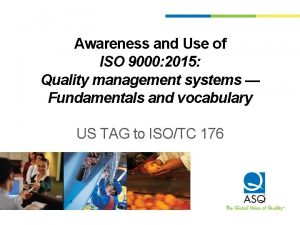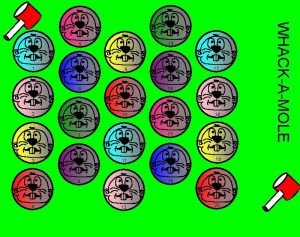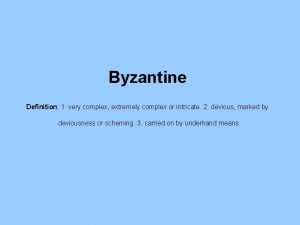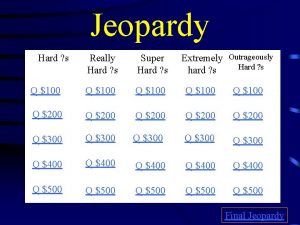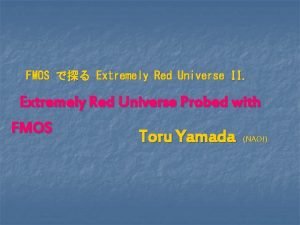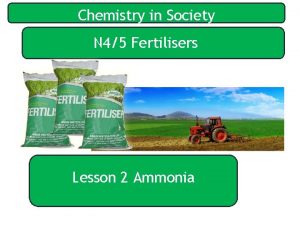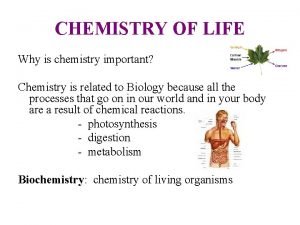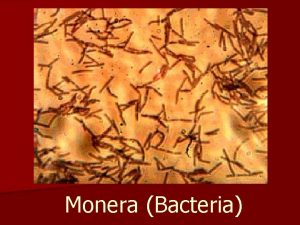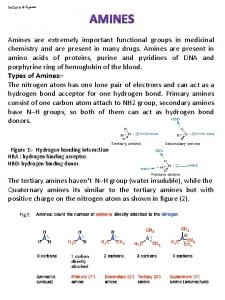Fertilisers National 5 Fertilisers Chemistry is extremely important












- Slides: 12

Fertilisers National 5

Fertilisers Chemistry is extremely important to the future of food production. As the population of the world increases, more efficient ways of producing foods are required. Chemists are able to help by researching which chemicals can boost plant production. Plants require chemical nutrients from the soil in order to have healthy growth. Three of the elements found in essential nutrient compounds are: nitrogen (N) phosphorous (P) potassium (K)

Fertilisers As plants grow, their roots extract nutrients from the soil and this means that as time goes on the level of nutrients present decreases. The next year, plants growing in the same place would have insufficient nutrients to grow healthily. Different plants require different levels of each nutrient. Both natural and synthetic fertilisers can be used to deliver the essential nutrients to the soil.

Sources of Fertilisers Natural fertilisers Synthetic fertilisers Decay of dead plants and animals Haber Process - making ammonia from nitrogen and hydrogen Decay of plant and animal waste Ostwald Process - oxidising ammonia to make nitric acid Unfortunately soluble fertilisers can be washed away by rainwater into rivers and lakes. This causes pollution resulting in fish dying and algal blooms (a green coating) covering water.

The Haber Process Liquid ammonia

The Haber Process Central to the production of fertilisers containing nitrogen, is a supply of ammonia (NH 3) which is an essential starting point for the production of fertilisers. Diatomic nitrogen has a triple covalent bond holding the atoms together. This requires a large amount of energy to break, so the direct reaction of nitrogen to hydrogen is not usually possible. The Haber Process overcomes these difficulties. The double arrow tells us that the reaction is reversible. This is a problem as the ammonia made easily breaks down into the reactants nitrogen and hydrogen. To make this process economic and efficient, the following conditions apply.

The Haber Process Condition Reason Temperature Moderate/Low temperature – reaction too slow. High temperature – ammonia decomposes. Pressure High - This increases the yield of ammonia. Catalyst Iron (Fe) speeds up the production of ammonia, saving energy costs. Condenser This cools the reaction down, turning ammonia into a liquid which is easier to extract. Recycled reactants Unreacted nitrogen and hydrogen are returned to the reaction, saving money.

The Fountain Experiment The properties of ammonia can be shown in a fountain experiment. A few drops of water are injected into the flask and they dissolve some of the ammonia gas. This decreases the pressure in the flask and sucks in the water from the beaker. The indicator turns blue upon contact with the ammonium solution.

Nitrate Fertilisers There are many useful synthetic fertilisers containing nitrogen, phosphorous and potassium. (NPK Fertilisers). Fertilisers containing nitrate ions (NO 3 -) not only contain an essential nutrient, but are also very soluble. Different crops need fertilisers with different proportions of nitrogen, phosphorous and potassium. If you go to buy a fertiliser from a shop, you often find that the fertiliser is classified according to which plant it can improve the best. Nitrate fertilisers can be made through neutralisation reactions. To complete this, a supply of nitric acid is required. This can be satisfied through a reaction called the Ostwald process. Reacting nitrogen and oxygen is not an economic way of making nitric acid. The chemist Ostwald discovered a way to react oxygen and ammonia - the first step in nitric acid manufacture.

The Ostwald Process http: //www. youtube. com/watch? v=FIx z 7 bii. IG 0 http: //www. bbc. co. uk/learningzone/cli ps/nitric-acid/4434. html

The Ostwald Process The most important stage of this manufacture is the catalytic oxidation of ammonia. Similar to the Haber process, the higher the temperature, the faster the reaction rate but the lower the % conversion due to the break down of NO and water back to reactants. A moderately high temperature is best. Once the reaction has started however, it does not need continued heating as it is an exothermic reaction and it gives out heat energy to keep the reaction going.

Percentage Composition of fertilisers As with metal ores, it is useful to be able to calculate exactly what proportion the essential nutrients accounts for in a fertiliser. % composition = mass of element x 100 mass of compound Q. Ammonium nitrate (NH 4 NO 3) is commonly used as a fertiliser. Given the relative atomic mass of hydrogen is 1, nitrogen is 14 and oxygen is 16, calculate the percentage of ammonium nitrate that is nitrogen. Now complete the percentage yield calculation sheet.
 Fertilisers
Fertilisers Synonym for extremely important
Synonym for extremely important Newspaper article format
Newspaper article format From most important to least important in writing
From most important to least important in writing Least important to most important
Least important to most important Hrllp
Hrllp Inverted subjects and verbs
Inverted subjects and verbs As ecological development proceeds, a biological community
As ecological development proceeds, a biological community Extremely graphic content
Extremely graphic content Extremely complex
Extremely complex Extremely
Extremely Extremely
Extremely Lindsey is extremely afraid of becoming obese
Lindsey is extremely afraid of becoming obese

